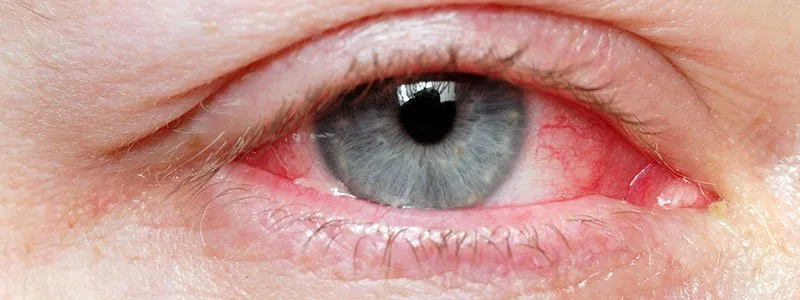Allergy
1. Allergies can best be described as:
The answer is:
An overreaction from the immune system to a foreign substance
Explanation:
Allergies are an overreaction from the body's immune system to foreign substances called allergens. Allergic reactions can result in sneezing, coughing, runny nose, and itching. Most of the time the reactions are bothersome, but in some cases they can be life-threatening and severe.
Allergies may be seasonal, such as hay fever, but they may also be associated with chronic conditions such as asthma or sinusitis.
2. The term allergic rhinitis is the proper medical term for "hay fever."
Explanation:
The term allergic rhinitis is the proper medical term for "hay fever." Rhinitis is inflammation of the nasal passages which can cause symptoms such as sneezing, itching, nasal congestion, runny nose, and postnasal drip (when mucus drains from the sinuses down the back of the throat).
Most people develop symptoms of allergic rhinitis in childhood or young adulthood, though it can start at any age. At times patients will have no symptoms, and others will have them only certain times of the year. Symptoms are worst in children and adults in their 30s and 40s, though the severity of the symptoms varies throughout a person's life.
3. The term allergic rhinitis is the proper medical term for "hay fever."
Explanation:
The term allergic rhinitis is the proper medical term for "hay fever." Rhinitis is inflammation of the nasal passages which can cause symptoms such as sneezing, itching, nasal congestion, runny nose, and postnasal drip (when mucus drains from the sinuses down the back of the throat).
Most people develop symptoms of allergic rhinitis in childhood or young adulthood, though it can start at any age. At times patients will have no symptoms, and others will have them only certain times of the year. Symptoms are worst in children and adults in their 30s and 40s, though the severity of the symptoms varies throughout a person's life.
4. The class of drugs used to treat allergic reactions is called: Antihistamines
Explanation:
The class of drugs used to treat allergic reactions is called antihistamines. Your body releases substances called histamines which attach to cells in the body, causing them to swell and leak fluid.
This results in common allergy symptoms such as itching, sneezing, runny nose, and watery eyes.
Antihistamines help prevent or relieve allergy symptoms by preventing histamines from attaching to the cells and causing symptoms.
5. Allergies can cause conjunctivitis.
Explanation:
Allergies can cause conjunctivitis (pink eye), which is common in people who have other types of allergies such as hay fever, asthma, or eczema.
Reactions to common allergens such as pollen, dust mites, animal dander, medications, cosmetics, and other allergy-provoking substances can result in allergic conjunctivitis.
Answer: Microscopic particles of animal skin
Explanation:
Pet dander is the proper term for microscopic particles of skin shed by pets such as cats, dogs, rodents, birds, and any other animal with fur or feathers.
In some people who are allergic to pet dander, these tiny flecks of skin can cause allergic reactions. In addition, proteins found in saliva, urine, and feces from cats, dogs, and other pets may trigger allergic reactions in some people.
7. Pollen is a powder produced by certain plants that can trigger allergies.
True
Explanation:
Pollen is a powder produced by certain plants that can trigger allergies. Throughout the year in the spring, summer, and fall, pollen is released into the air and carried by the wind to other plants to make seeds. This is how plants reproduce, but the pollen that travels in the wind is also in the air we breathe. For those who are allergic to it, it can trigger asthma and allergy symptoms.
8. Celiac disease is caused by an autoimmune reaction to gluten.
True
Explanation:
Celiac disease is a disease of the small intestine in which damage to the lining of the small intestine leads to malabsorption of minerals and nutrients. The destruction of the inner lining of the small intestine in celiac disease is caused by an immunological reaction to gluten, a family of proteins found in wheat, barley, rye, and oats.
9. How are allergies diagnosed?
By Skin tests and blood tests
Explanation:
Allergies are diagnosed with skin tests and blood tests. Skin testing is considered the most accurate, but both skin and blood testing can detect a person's sensitivity to common allergens such as pollen, mold, dust mites, medicines, foods, latex, or other substances. Skin testing is usually preferred but allergy blood tests may be performed if a patient has severe skin rashes, or if a person is taking a medication that cannot be stopped that would interfere with the results of a skin allergy test.
10. An allergic reaction can produce urticaria. A common term for urticaria is: Hives
Explanation:
Urticaria is the medical term for hives, a common allergic reaction that affects about 20% of people at some point in their lives. There are many triggers for hives, but the symptoms include itchy patches of skin that become swollen red welts. Itching can be mild to severe, and may be made worse by scratching, alcoholic beverages, exercise, and stress.
Many people are aware of their triggers for hives, such as eating foods including shrimp or peanuts which cause the allergic reaction within a short time. For others, there are so many possible causes of hives it requires allergy testing by a physician. In a small number of cases the cause may never be identified.












Comments
Post a Comment